9 October is National Polenta Day, the traditional Italian peasant food made with a cornmeal and water mixture. One of the main ingredients for tasty local dishes, polenta is suitable for various recipes (especially in Northern and Central Italy) and combines perfectly with other products.
In the following article, you will learn about its ancient origins, its preparation secret and some of the most savoury and unconventional recipes to celebrate National Polenta Day!

National Polenta Day: the cereal from the New World

Mixing coarsely ground cereals with hot water dates back to prehistoric times. Instead, the origins of polenta can be traced back to Roman times, when people used to eat a similar mash of ground spelt and water served with cheese or meat. However, authentic polenta appears at the beginning of the 16th century, after the overseas travels to the New World. Explorers imported native products from the new lands the Old World had never seen before, including corn. The precious golden-coloured cereal began to be planted and consumed throughout Europe, to the point of playing an important role in the diet: hence the importance of celebrating an ingredient with a dedicated moment, National Polenta Day.
History of Polenta: why we celebrate National Polenta Day
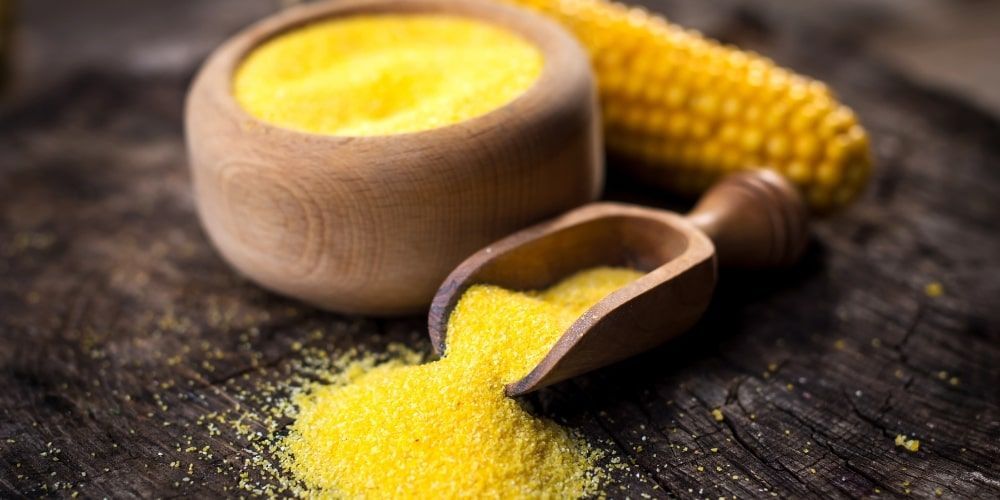
In Italy, corn began to spread in the early 1500s as cattle feed. Later, it spread as one of the main ingredients of the poor peasant diet in the Northern regions. People grounded and cooked corn with water; then they served polenta accompanied by legumes or cheese. Peasants had already cooked and eaten a similar dish before, but it was based on spelt, rye or other cereal flour. However, the introduction of corn in our crops led to the common use of cornmeal, from which one of the most appreciated dishes of national cuisine was born.
Innovative preparations with polenta
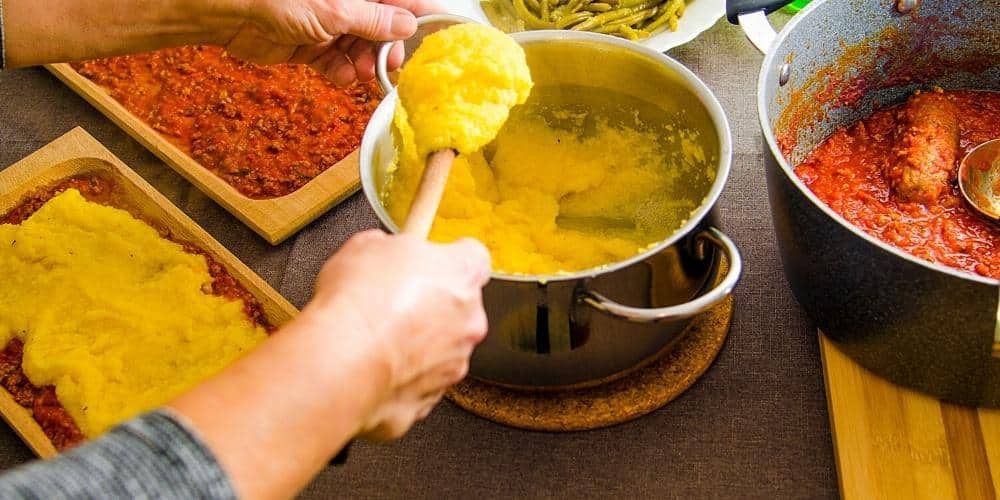
As we have seen, polenta is not a gourmet dish but rather a recipe linked to the frugal life of the past. However, its consumption has become so deeply rooted in the culinary traditions of Northern and Central Italy that it is now one of the typical national dishes. Given its neutral taste, it is easy to combine with other products (cheese, meat, fish, vegetables, mushrooms, etc.), making it the perfect side dish or primary ingredient for many dishes with a unique flavour. Traditional recipes and local reinterpretations rule in Italian gastronomy. Still, food means more than just feeding for Italians. Like so many other traditional dishes, polenta represents an instrument of communication to transmit the values of Italian meal. For this and more reasons Italian cuisine is the most loved in the world.
How to cook polenta
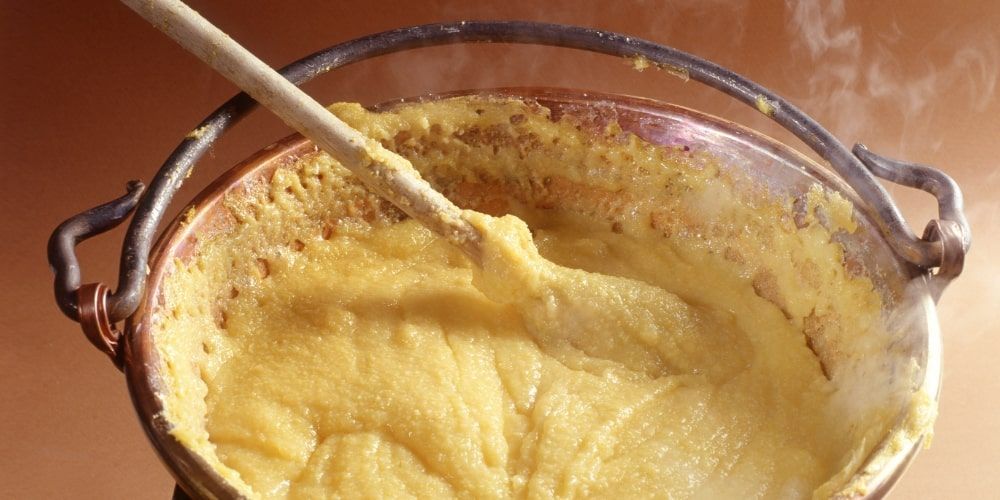
Contrary to what the use of a few simple ingredients might suggest, the preparation of polenta requires time and patience. First of all, you have to start with the pan: traditionally, polenta is cooked in the paiolo, a cast-iron or copper pot with a convex bottom and high sides. Pour the cornmeal (or other cereals, as we shall see) into the pot filled with boiling salted water. Stir continuously for about an hour (preferably with a wooden spoon or a whisk) until the dough gets the proper density. Once cooked, you have to pour polenta onto a wooden chopping board.
Discover the different types of polenta
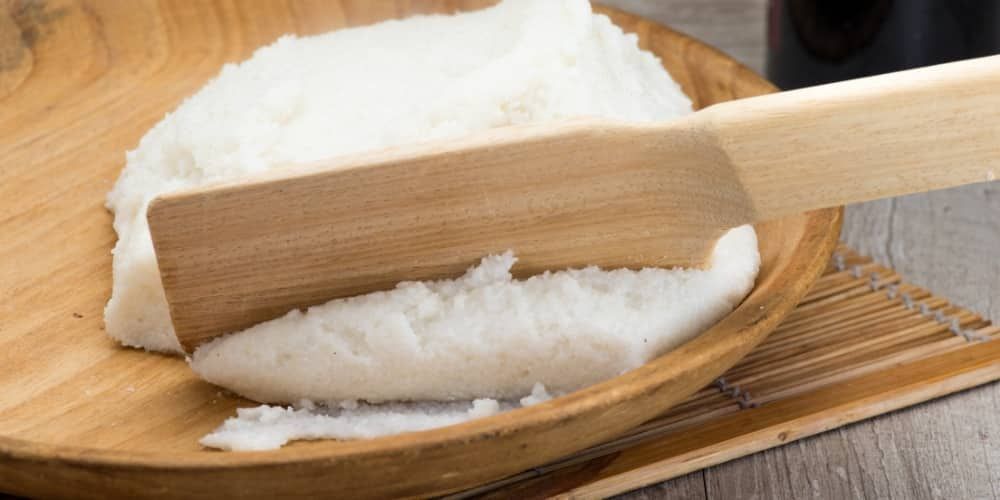
Classic polenta is made with cornmeal (yellow polenta). However, it can change its flavour and colour depending on the flour used. In Lombardy, for example, the tasty dark-coloured polenta Taragna is made with a mixture of cornmeal and buckwheat flour. On the other hand, white polenta is typical of the Veneto region and is made using white cornmeal known as Biancoperla. Finally, although it is a typical Northern and Central Italy dish, Southern Italy also has its own recipe: polenta made with legume flour. In addition to the different types of flour used, polenta also takes on numerous flavours according to traditional regional recipes. Cooking, degree of density, softness/hardness, combined ingredients, seasoned sweet or savoury, polenta has an infinite number of variations that have a single denominator: the taste of tradition. On National Polenta Day, all variations are celebrated!
Classic recipes to taste polenta: not only on National Polenta Day
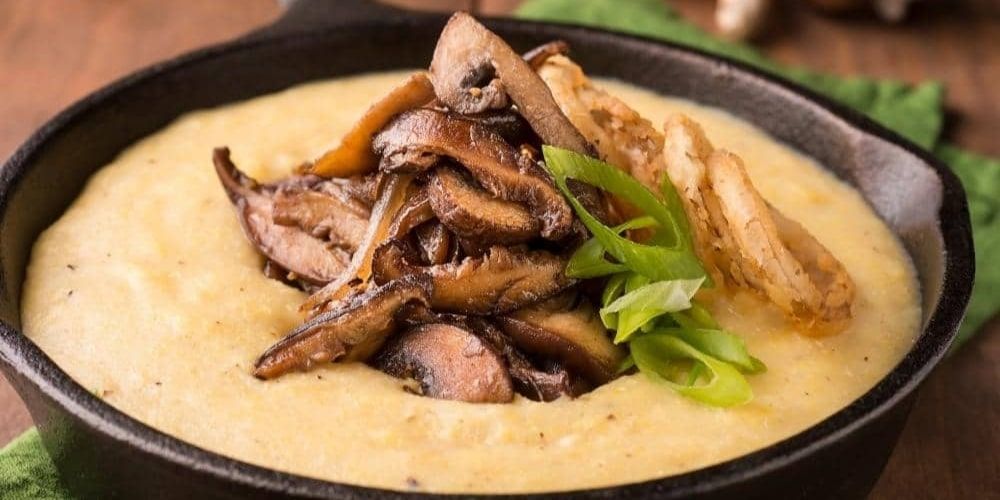
Aperitifs, salads, first courses, side dishes, main courses and desserts: the versatility of polenta allows preparing many tasty and creative recipes! One of the easiest ways to eat polenta is to use it as a bread substitute; once cooled, you can cut it in chunks and cook it in the oven or on the grill and flavour it as a bruschetta (generally toasted bread) topped with melted cheese or seasonal vegetables. Otherwise, you can cut croutons to enrich a salad. Someone who wants to save childhood traditions dip polenta in milk at breakfast! However, if you don't feel so daredevils, we suggest the classic combination of hot polenta with porcini mushrooms and sausage. It is a delicacy indeed! Alternatively, you can also try the vegetarian version without meat and flavour the polenta with legumes or vegetables. One of the vegetarian polenta recipes is Taragna, a typical dish from Valtellina. It is a delicious combination of polenta made with double flour (corn and buckwheat) and melted butter with other Upper Lombardy cheeses. The famous Piedmontese polenta concia (polenta with cheese) follows the same recipe but with just cornmeal and different local cheeses.
Starters, main courses, desserts and more with polenta
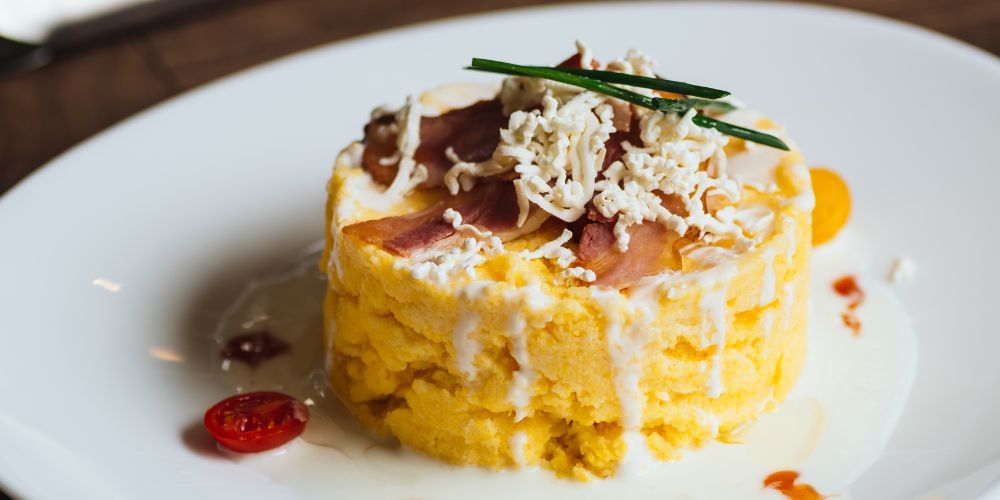
Following the idea of polenta as an aperitif or a starter, it is served on a chopping board with cold meats and cheeses. On the other hand, polenta in first courses allows free rein to your culinary imagination. Some of the tastiest recipes include potato and polenta gnocchi served with melted gorgonzola cheese or vegetables. Surprisingly, you could try polenta with fish Finally, polenta can also be the basis for a...dessert! For example, in Tuscany and Emilia-Romagna is cooked by using chestnut flour. However, sweet polenta recipes can also be found in the rest of Italy.
Treat yourself to a trip in the enchanting Tuscan countryside, sprinkled with rolling hills, with the help of an expert guide, who will explain the historical and cultural events of the places explored with the Visit Italy ticket.
Plan your trip to TuscanyWhere to try polenta
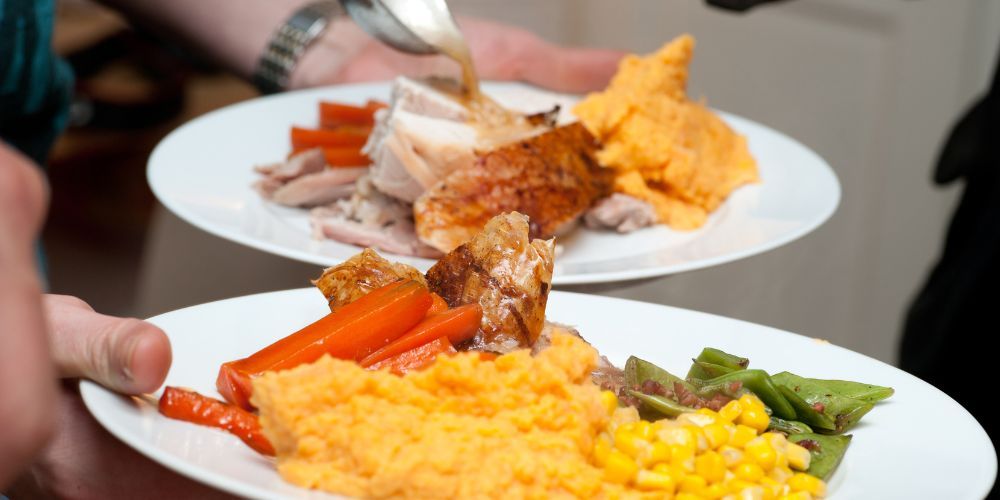
As already mentioned, polenta is a popular national dish but more typical of Northern and Central Italy. However, there are also excellent recipes in the South. In Brianza (Lombardy) and Piedmont, you can taste a delicious polenta concia, while people prefer the white version in Veneto. In Trentino, on the other hand, it is customary to eat it much grainier, while Valtellina (Lombardy) is the kingdom of Taragna. There is also polenta from Emilia-Romagna, both sweet and savoury. In Central Italy, you can find tasty polenta in Tuscany, Marche and Lazio, with less classic and more creative variations. Speaking of creativity, as we head down the Peninsula, polenta can also be found in Campania and Puglia as street food.
Treat yourself to a romantic private gondola ride along the picturesque Grand Canal to admire enchanting views, after which you can sample delicious traditional dishes with the ticket made available by Visit Italy.
Discover Venice by gondolaHere's a fun fact: Polenta Well in Corinaldo
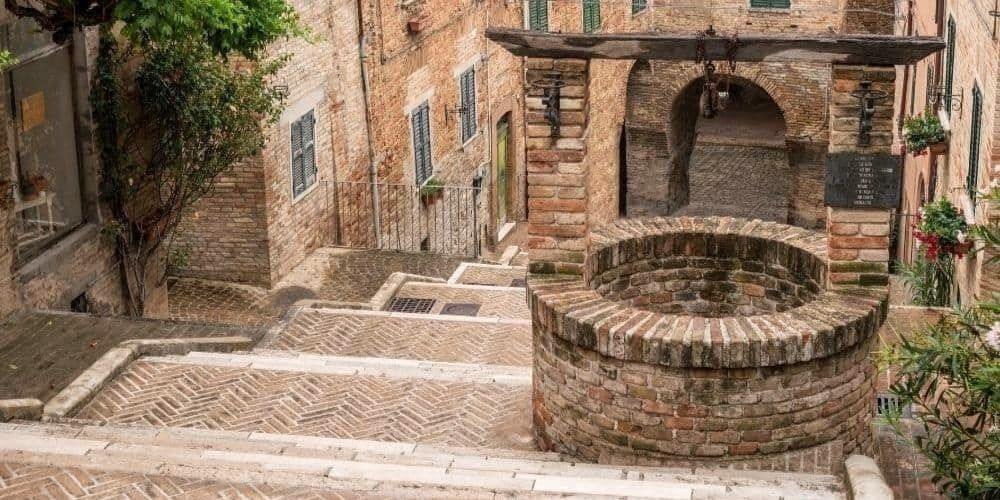
In the town of Corinaldo, in Ancona's province (Marche region), several legends surround the famous Polenta Well. It is said that a long time ago, a farmer carried a sack full of cornmeal (or buckwheat, depending on the story) on his shoulders. After walking down the famous flight of steps in the centre of the village known as Via Piaggia, he came to a large well. He stopped to rest and refresh himself, but the sack he was carrying fell from his shoulders into the well when he tried to drink. Some say that so much polenta came out of the well that the whole village could be fed. Others claim that the peasant fell into the well and ate all the polenta. In any case, this amusing tale gave the inhabitants the name of polentari (polenta eaters), which they are very proud of!
National Polenta Day is a fixture for all lovers of traditional cuisine, allowing you to appreciate authentic flavours. Besides being a pleasure for the palate, polenta offers numerous health benefits, thanks to its high fibre and complex carbohydrate content. So, don't miss the opportunity to enjoy this precious dish, rediscovering traditional recipes and experimenting with new combinations.
About the author
Written on 01/01/1970


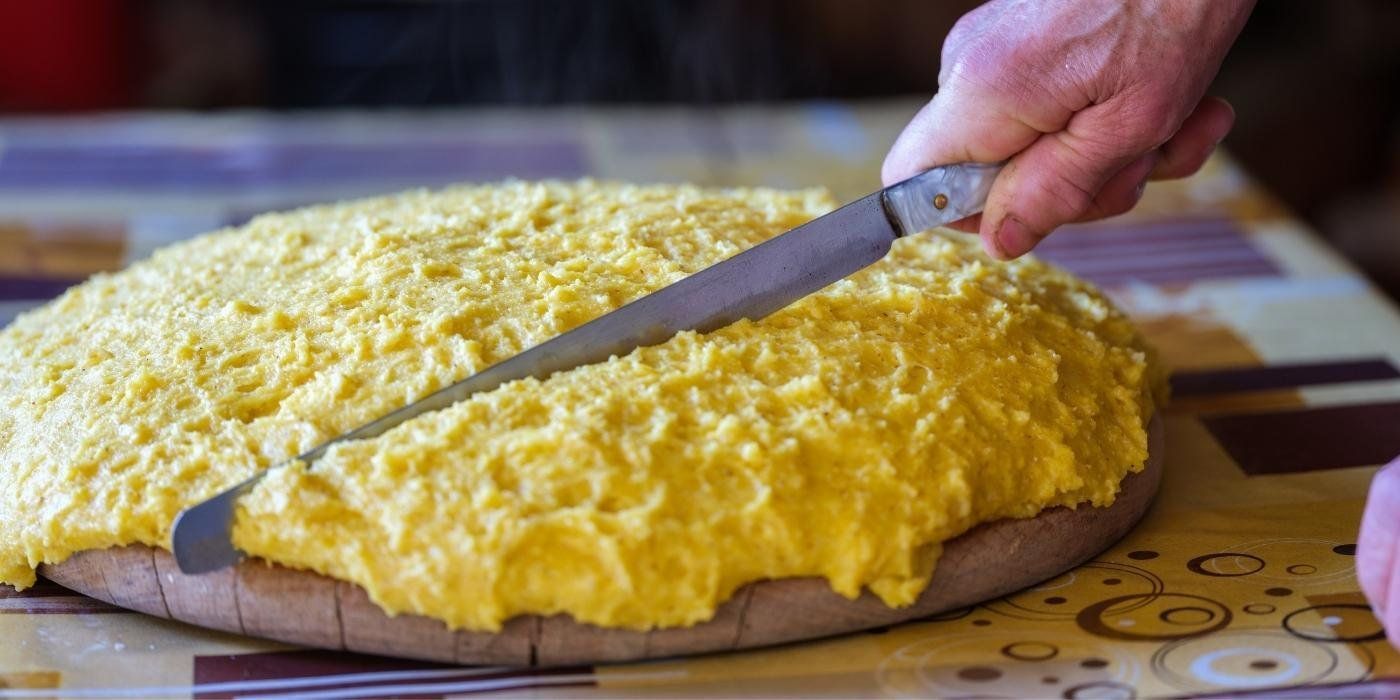
Sabrina Fabozzi
How deeply do you know polenta? Discover with us the secrets of one of Italy's best-loved traditional dishes on the occasion of National Polenta Day!